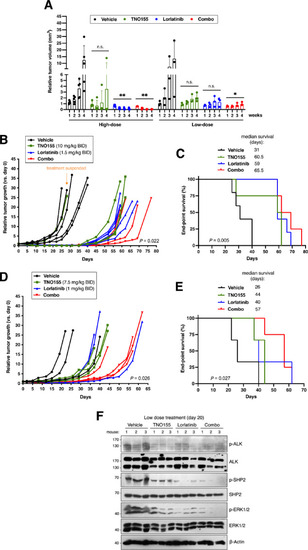- Title
-
SHP2 inhibition with TNO155 increases efficacy and overcomes resistance of ALK inhibitors in neuroblastoma
- Authors
- Valencia-Sama, I., Kee, L., Christopher, G., Ohh, M., Layeghifard, M., Shlien, A., Hayes, M.N., Irwin, M.S.
- Source
- Full text @ Cancer Res Commun
|
ALK-mutant neuroblastoma cell lines are sensitive to SHP2 inhibition. |
|
TNO155 synergizes with ALK-TKIs in ALK-mutant neuroblastoma cells. Cell viability (alamarBlue) analysis ( |
|
TNO155 sensitizes ALK-mutant zebrafish xenografts to ALK inhibitors. Zebrafish embryos (2 dpf) were injected with GFP-expressing Kelly ( |
|
TNO155 and lorlatinib treatment delays tumor growth in ALK-mutant mouse xenografts. |
|
Dual SHP2/ALK inhibition resensitizes lorlatinib-resistant ALKF1174L cells and reduces tumor regrowth. |
|
Alterations in RAS-MAPK pathway associate with lorlatinib resistance. |






